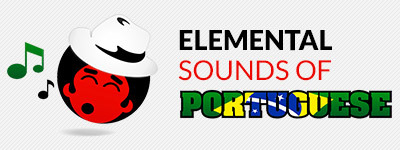Benny Lewis's Blog, page 76
January 6, 2017
How Do Spies Hide Their Accent?

In 2010, eleven people blew the minds of their friends and neighbours. Their arrests by the United States government revealed that they weren’t simply “normal” Americans, living the suburban dream.
It turned out that they were intelligence agents, collecting information to send back to their native country of Russia.
Many of them had gone undetected for years. How on earth had they achieved this?
Put simply, they blended in. They looked, acted and sounded like any other American living in the United States. They mimicked the local culture.
These spies achieved something that many language learners struggle with – they mastered an accent to the point where they were indistinguishable from native speakers.
How Exactly Do Spies Hide Their Accents?
A intelligence agent who had lived undercover in the United States for over 20 years gave an interview describing his experience after he’d returned to Russia. In the interview, he was asked how he was able to fool those around him for such an extended period of time.
His answer was quite simple – he’d stopped speaking Russian and conversed entirely in English or French, no matter where he was at the time.
“ You cannot use your native tongue, even at home; you have to be a control freak. That said, after working for several years, it comes naturally to you. You even have dreams in other languages.” - Andrei Bezrukov
How do spies get to this point? This is information that countries such as the United States and Russia keep very close to their chests – but from general understanding, it’s due to hours upon hours of study in intensive training programmes. Intelligence agents are made to concentrate solely on their pursuit of mastering both the language and accent of the country they plan to infiltrate.
Spies-in-training spend up to eight hours a day in language classes, along with at least a couple of hours of homework per night. It’s a hard slog that pays off when in six months’ time you may not be able to single them out as anything other than native speakers.
Unfortunately, not all of us have the same amount of time on our hands.
So what do you do if you want to master the accent of a foreign country, but your resources aren’t exactly in the same ballpark as those of the Russian or US military?
I have a few ideas for how to improve your accent. Read on to find out more.
How to Improve Your Pronunciation and Accent (5 Steps)
Step 1: Find a Native Speaker of Your Target Language
Ideally, you’d want to find native speakers of your target language - then talk to them!
You’ll hear the inflections and tones of the language and your ear will start honing itself to these sounds. Also, it never hurts to have someone on hand to help you when you get stuck on a pronunciation or are having trouble rolling your ‘r’s.
However, sometimes this is easier said than done – particularly if you don’t live in a big city, or you’re learning a less common language.
What can you do if this is you?
One of my favourite resources for practising with native speakers is italki. italki helps you find language teachers to Skype with online.
It’s helped me out in several situations. I used italki to learn Mandarin Chinese when I was living in Taipei, because it turned out to be a much cheaper option than having lessons in person.
There have even been times where I learned a language before travelling, such as when I learned Egyptian Arabic while living in Brazil. I was fluent to the point where I could walk into the Egyptian Embassy in Brasília and apply for my visa – speaking entirely in Egyptian Arabic. Skype lessons were key in achieving this conversational fluency.
What if you’re learning a language that’s not spoken by many people? I’ve heard about people learning less common languages who have had issues trying to track down a native speaker.
Here’s an option: extend your search from native speakers to fellow learners who are at a more advanced level than you. You can use the language option on italki and untick “native speaker”.
Alternatively, meet up in person. Couchsurfing and Meetup are great for finding other language learners in your town or city.
Chatting with native speakers online isn’t the only thing you can do to improve your accent...
Step 2: Get Cultural Immersion with Radio and TV
Television is brilliant for language learning – if you approach it the right way. You can find many foreign shows (with subtitles!) online. Movies are handy too – as long as you remember there is a right and wrong way to use films to learn a language.
Watching the news is particularly valuable. News anchors and journalists enunciate clearly and use correct pronunciation. Pro-tip: watch news shows on YouTube, and slow the videos down using the video settings button. You can slow videos to quarter speed.
Similarly, radio is a helpful resource, particularly for learning on the go. The radio app TuneIn has radio stations in most major languages. Likewise, Spotify has an excellent selection of music from around the world.
Through the use of these resources, you’ll be tuning your ear to the inflections, tones and general pronunciations of your target language, which will in turn make it easier for you to master the accent.
REMEMBER: watching TV or listening to the radio is not an excuse to switch off your brain. Passive learning on its own does not work! You need to be actively studying what you are watching/listening to. Radio and TV should should be just one tool in your language learning toolbox – it’s difficult to maintain any progress if you rely on them alone.
Step 3: Stick Post-Its Around Your Home
A great way to improve your pronunciation of words is with forced repetition.
Try this: label some key items around the house with Post-Its. Don’t forget to add the articles before the words if you’re learning a language that uses them, such as un/une/des in French. This will help you avoid confusion in the future.
Beneath the name of the item, write how it’s pronounced.
Soon enough, you’ll be able to remember both the word and the pronunciation.
Step 3: Record Yourself Speaking
Recording yourself - and listening back to it - is one of the most powerful hacks I know for improving pronunciation.
Does the idea of it make you cringe? You’re not alone. Many people experience waves of revulsion whenever they hear an audio clip of themselves talking. Over time you’ll get used to it - especially once you’ve realised how powerful it is.
Use the voice recorder on your phone to record yourself saying phrases or words you’ve had difficulty pronouncing. Then, get ruthless! Listen to yourself as though you were listening to someone else. Start with being kind. Celebrate the small victories – such as mastering a word you have previously had issues with. Then, pick apart the mistakes. Identify which words need improvement and go to town on them!
What if you’re unsure if you’ve got the correct pronunciation? Find a native speaker, and ask them for feedback on your recording. You could even ask them to record a word that you’re having difficulty with, for reference.
Step 5: Check Out the Mimic Method
My friend and fellow polyglot Idahosa Ness has spent years developing a system that has helped thousands of people lose their strong “foreign” accent when speaking a new language.
Mimic Method takes you through the component sounds of a language: the rhythm, the beat, the musicality and individual sounds, and how they all tie together. And it shows you exactly what steps to take to develop a more authentic accent.
The Mimic Method offers accent training for:
English
Spanish
French
Portuguese
Mandarin
German
Italian
Japanese
Click the language you want to learn to find out more about how to improve your accent and pronunciation when you’re speaking.
You Don’t Have to Be a Spy to Master An Accent
Don’t worry – you can breathe a sigh of relief! You don’t need to go through intensive spy training to master a foreign accent.
You just need to practise and tune your ear to the language you’re learning. Don’t be scared to seek assistance from those more advanced in the language than you.
Do you have any tips or tricks for pronunciation that you’d like to share? Let me know in the comments.
The post How Do Spies Hide Their Accent? appeared first on Fluent in 3 months - Language Hacking and Travel Tips.




January 3, 2017
New Mission: Introducing Holly’s Portuguese in 3 Months Mission

How does she feel about taking on this challenge? Will she make it?
Here's Holly:
I’m a language enthusiast. I’m fluent in French and speak Thai at an upper intermediate level. But I started studying French in school at the age of eight, and Thai when I was 19 on an exchange program.
Since then, I’ve studied five other languages, but never made it very far, and have since forgotten everything. Recently, I realised that it had been FIFTEEN YEARS since I’d last learned a language to a useful level. What kind of “language enthusiast” was I? I decided to do something about it.
Right around the time that I was toying with the idea of learning Spanish or Portuguese, Benny contacted the Fluent in 3 Months (Fi3M) team about doing reviews of various language products. Woohoo! I thought. A chance to start a new language, and really stick with it this time.
How I Chose to Learn Portuguese
I couldn’t decide which language to choose, however. I recently moved to California, so Spanish would be a practical choice. On the other hand, I very much want to visit Portugal and Brazil in the near future (in fact, I already have a 5-year tourist visa for Brazil!). So I decided to let Benny choose for me. I told him I would be happy to review a product for either beginner Spanish or beginner Portuguese. He sent me the Michel Thomas Total Portuguese CD course, which teaches European Portuguese. I did the course, recorded a (very slow and painful) conversation with a native speaker, and wrote my review.
Honestly, if I hadn’t done that live conversation with a native speaker, I probably would have called it quits after finishing the review.
But using the language with a real person - even though I understood very little, and could express even less - gave me the enthusiasm to continue. In a few weeks, I had gone from knowing absolutely no Portuguese (not even “Hello” or “Thank you”), to having a basic conversation. In all the other languages I had studied and forgotten over the years, I had never gotten that far, because I was learning in a traditional classroom setting. This involved lots of reading and writing, a bit of listening, and very little speaking.
I didn’t want to forget Portuguese like I had so many other languages. With the Michel Thomas CD course and one conversation with a native speaker under my belt, I decided to do my very own three-month Portuguese mission. I set the very reasonable goal of reaching B1 level.
How I Started My First Ever Three-Month Language Mission
I had never done a three-month mission of my own before. Before starting, I took a good, long look at my past successes and failures in language learning. I wanted this mission to succeed where my other attempts had failed.
I asked myself what my biggest weaknesses were in language learning. Without a doubt, for every language I had ever studied, the answer was always the same: listening comprehension and speaking ability. (This appears to be the case for most Fi3M readers too.) Reading and writing for me are easy, even for languages with non-Latin alphabets. I’ve read 300-page Thai novels before, and yet still struggle to understand all the dialogue on a Thai children’s TV show!
I wanted things to be different this time. I wanted to be able to understand spoken Portuguese, and speak it myself, without struggling all the time. So I decided that the big rule I would follow throughout the entire mission would be:
Go All-in: No Reading or Writing - Only Speaking and Listening
I didn’t want to opt for a “mostly” speaking and listening approach; I went all-in. I decided to do virtually NO reading or writing in Portuguese for the entire three months. No Harry Potter books, newspapers or children’s picture books. No writing down vocabulary lists or useful phrases. No flashcards, even! Instead, any time I set aside time to study Portuguese, it would be either through listening or speaking the language
The reason I went “all-in” is simple: I know myself. I know that if I allowed myself to incorporate reading and writing exercises into my study routine, they would quickly take over. I would get lazy and stop scheduling Skype conversations or struggling through Portuguese TV shows. I’d always choose the easy way out whenever I sat down to study.
By not allowing myself to read and write, any time I decided to study Portuguese, it would have to be through audio exercises, Portuguese TV shows or podcasts, or a conversation with a native speaker.
That said, I did plan to allow myself three small exceptions to this rule:
I changed my phone’s OS to Portuguese (because I have to use my phone anyway, so using it for everyday tasks wouldn’t replace an actual Portuguese study session)
Duolingo (for vocabulary building, and because I don’t love the app enough to study it for long stretches - so it wouldn’t cut into my listening/speaking exercises very much)
Reading song lyrics (because I wanted to use music to help me learn, but understanding song lyrics is difficult without seeing them written down - even in English!)
The other, more minor reason I decided to take this approach was to experiment with different learning methods. I wasn’t sure how well I would learn the language without reading and writing. Would it be possible to have intermediate-level conversations after only three months if I didn’t build up my grammar skills through reading and writing? I wanted to try it this way so I could report to you, the reader, about whether it was a viable approach.
My Plans for Getting Listening and Speaking Practice
Now that I’ve laid out what I planned NOT to do during my mission, here’s what I DID plan to do for getting tons of listening and speaking practice throughout the three months:
italki - for meeting conversation partners and Portuguese teachers to get both speaking and listening practice.
Meetup.com - for finding Portuguese meetups and language exchanges in my area.
PortuguesePod101.com - for learning grammar, and getting experience with spoken Portuguese in a variety of settings. I purchased a three-month basic subscription, which gave me everything I needed for my three month mission.
TV shows - anyone who knows me knows I love a good TV show. I planned to find as many Portuguese language TV shows online as I could, and actively listen to them.
Music - when the TV’s off in my house, the music gets turned on. I LOVE music. So I planned to research some good Portuguese-speaking bands so I could learn their songs by heart.
Podcasts - for (actively!) listening to spoken Portuguese when I couldn’t watch videos.
Audio flashcards - for learning vocabulary, grammar and important phrases by listening to them, not reading them (I will explain how I did this in a later post).
My goal was to do at least one - preferably three or four - of these activities every single day.
What Was My Level on Day 1?
As I mentioned, I completed Michel Thomas Total Portuguese before starting this mission. Michel Thomas Total Portuguese is a seven-hour audio course - though it takes slightly longer than seven hours to complete since you’re supposed to pause playback a lot while you’re learning new phrases. Instead of teaching you canned phrases to memorize, it introduces you to the rules of the language little by little. After learning a new rule, the teacher asks you to use that rule, and the rules you’ve already learned, to deduce how to say new words and phrases.
By the end of the course, you can use what you’ve learned as a foundation to figure out how to say all kinds of phrases without having to memorize them or repeat after the instructor. For example: “I would like to…”, followed by a verb, or “Could you please”, followed by a request. You learn verbs as you go, so you can complete these phrases in a variety of different ways.
While it couldn’t teach a huge variety of material in a mere seven hours, I came away able to use what I’d learned with confidence.
When I completed the course and recorded my Portuguese conversation for the product review, I wasn’t planning on doing a three-month Portuguese mission. I didn’t start my mission until a few weeks after this. So technically, I didn’t start my Portuguese mission at zero.
However, I wouldn’t call myself a “false beginner”. Unlike most false beginners, I haven’t been studying the language on and off for years, or picked up the basics from my surroundings. In fact, before starting the Portuguese CD course, I had never studied the language a day in my life, and my level was literally zero. I didn’t even know how to say Olá or Tchau (hello and goodbye).
In my next post, I’ll talk about the first few days of my mission. You can also watch my “Day 0” video - the conversation I recorded after doing the Michel Thomas Total Portuguese CD course, and a few weeks before officially starting my three-month mission.
I hope you enjoy following along with my Portuguese in 3 months mission. Stay tuned for more updates!
The post New Mission: Introducing Holly’s Portuguese in 3 Months Mission appeared first on Fluent in 3 months - Language Hacking and Travel Tips.




December 30, 2016
Why Learn German? 10 Good Reasons to Learn German

There are plenty of good reasons to learn how to speak German.
Deutsch was the fourth language I learned to speak fluently. I got to spend three months living in Berlin, Europe’s capital of cool. I met some amazing people, and made some lifelong friends. I loved every minute of my three month German mission.
I’ve worked hard to maintain German fluency in the years since I completed the mission. It’s a language I love, and I think you would too if you learned it.
Not sure whether you should study German? Here are 10 great reasons to study German.
1. You'll Find a Whole New Internet
Got a personal blog that’s missing an audience? Perhaps you should consider writing it in German, as well as your own language.
Germans have a dominant Internet presence. Germany’s top-level country domain of .de used to be second only in the world to .com. In 2016 it ranked at around fifth, coming in after .com, .ru (Russia), .net and .org.
Some 5.8% of websites are written in German, just behind Russian’s 5.9%.
There’s a whole new Internet to be discovered for German speakers. Do you really want to miss out?
2. You Can Attend University in Germany for $0.00
Who says you have to spend a fortune to get a decent education?
It costs £9,000+ a year to study in the UK. American students, meanwhile, can end up saddled with a six-figure student loan.
In Germany? Tuition is free in most universities. Some institutions charge around €500 a semester.
And there’s no sacrifice in quality that comes with that. Many German universities are in the world’s top 100.
How has Germany got rid of fees? Two ways. First, a smaller percentage of students go to college – 27% percent, compared to the UK’s 48%. On top of that, universities are paid for by German taxpayers.
What about international students? In countries such as the UK, USA and Australia, degrees often cost twice as much for foreign students as they do for nationals. Astonishingly, this is not the case in Germany. Both domestic and international students benefit from a free education on undergraduate courses. Switzerland and Austria also offer education for much lower fees than elsewhere in the world.
What’s the catch? Although some courses are offered in English a large percentage are taught in German. Applicants have to prove their proficiency in German.
Why not learn German and get a free education?
3. Mozart
What do Mozart, Bach, Beethoven, Schubert, Brahms, Schumann and Wagner have in common? Apart from being famous composers, they all spoke and wrote in German.
Bringing things into the present, I’m sure you’ve heard of the likes of Rammstein, Kraftwerk and Milky Chance. These bands sing in German and English.
While we’re on the arts, some 80,000 new books are published in Germany each year. Only a small percentage of these are translated into other languages. All these books are only accessible to those who have a fluent grasp of German.
Plus, you’ll be able to read Kafka and Goethe as they were originally written, with nothing lost in translation.
4. Want to Make Money? Learn German
Did you know that Germany is the largest European trading partner with the US (and has a ranking of fifth overall)? Germany exports everything from vehicles and machines, to chemical products and metals.
If you’re interested in pursuing or strengthening a career in business, you’ll stand yourself in good stead by knowing the native language of your German business partners.
5. German is Easy for English Speakers to Learn
Here’s a little known fact: German and English belong to the same language family tree. That's why German is easy for English speakers.
Unlike French, Italian and Spanish, which are Romance languages, both English and German belong to the Germanic branch of the Indo-European language family. Some German words and expressions are still used regularly in English, such as angst, kindergarten and kitsch.
English was later influenced by French, Greek and Latin. However, if you strip English back to basics, the language most resembles German. Not convinced? Look at words such as Bruder (brother), Wasser (water) and Freund (friend).
You’ll be surprised by how many words you already know if you choose to learn German as a foreign language. If you’re an English speaker learning German, you’re at an advantage.
6. German is the Most Spoken Native Language in the European Union
With an estimated 175-200 million speakers worldwide, German is the eleventh most widely spoken language in the world. Considering that Germany is a country with a population of about 80 million people (compared to the US population of over 300 million), that’s nothing to scoff at.
Some 95 million people speak German as a first language, meaning there are around as many speakers of German as a second language as there are native speakers. Talking of native speakers, German is the native language of Germany, Austria and a decent chunk of Switzerland. As a result, German has the largest number of native speakers within the EU. That’s why, along with English and French, German is an official language of the European Union.
Many people in Central and Eastern Europe choose to learn German as a second language. Outside the EU, it’s the third most taught foreign language.
7. Germany has the Biggest Economy in Europe
In 2015, Germany had an economy of $3.4 trillion, making it the fourth largest economy worldwide, after China, the US and Japan. As far as world exports go, it once again sits comfortably at fourth on the list.
Compared to economies in Europe, it has a comfortable lead against both the UK and France, which in 2015, sat at $2.9 and $2.5 trillion respectively.
It’s also home to many international corporations, such as Volkswagen, Allianz, Birkenstock, Mercedes-Benz, Siemens and stacks of other brands that are recognised globally.
Having German language skills on your CV can help your career in so many ways.
8. Berlin is a Hotspot For Startups and Innovation
European capitals are great places to live for many reasons. Often, it’s because they seem like places of endless opportunities, whether that be within fashion, entertainment, or business.
If you want to live comfortably in cities like Paris and London, you’ll often find yourself paying extra for that luxury. It’s hard to focus on building a business or making a name for yourself, when you’re struggling to make rent. Fortunately, this isn’t so much the case in Germany’s capital, Berlin, a city where the cost of living is low and the quality of life is high.
Along with the cheap rent, Berlin is known for liberal thinking and is the capital of cool in central Europe. A new startup is created in the city every 20 minutes. Many of them have been hugely successful – check out SoundCloud, Delivery Hero and Clue.
If you’ve got an idea that you’re convinced is the next big thing, Berlin may be the city where you see your dream come true.
9. German is a Key Language for Science Nerds
At the turn of the 20th century, Germany was tipped to become the official language of science, thanks to the success of leading thinkers such as Max Planck and Sigmund Freud.
Then WWI happened and in the aftermath, Belgian, French and British scientists ostracised scientists from Germany and Austria by encouraging international boycotts. Matters didn’t improve much due to WW2. This led to a division between the scientific communities of Europe. German dominated central and the eastern Europe. French and English became prevalent in western Europe.
Since then, English has cemented its stronghold as the official language of science. Some scientists worry that this will affect the work of those who are forced to research and publish in a foreign language.
If you’re scientifically inclined (as I am), fluency in German will give you the upper-hand in understanding the works of the some great German minds, such as Albert Einstein. Plus, you’ll be supporting a great cause – that of keeping the scientific community multilingual.
10. Wanderlust
One thing I’ve certainly noticed as I’ve travelled the world, is that along with Canadians and Australians, Germans are everywhere.
Germans earn good money and are entitled to at least 20 days of leave a year (some get six weeks!). This gives them the time and money to travel, most commonly to foreign countries. And what do they do? They spend, spend, spend - around €80 billion a year - making them the nation with the largest outbound tourist trade in the world.
Germany has an enviable position geographically within the EU (dead centre), but that doesn’t stop them from travelling nearly everywhere else in the world – Africa, Asia and the Americas.
If you work within the tourism industry, speaking German will give you a big advantage.
And if you suffer from a severe case of wanderlust? You’ll have more opportunities to make friends with the German speakers you bump into on your travels.
Your Call: Why Learn German
There are countless reasons why learning the German language can be beneficial in the long run. From increasing your career prospects to broadening your mind, the opportunities that await you know no bounds.
Have I convinced you on the “why learn German” question?
What’s your top reason for wanting to speak German? Let me know in the comments.
The post Why Learn German? 10 Good Reasons to Learn German appeared first on Fluent in 3 months - Language Hacking and Travel Tips.




December 23, 2016
The Coolest Jobs! Get Paid to Learn a Language

I’ve spent most of my adult life doing this. I’ve gotten jobs overseas and then learned the local language on the job.
While I don’t think it’s necessary to live in a foreign country to learn a language, I will admit that I see the appeal. Learning languages by immersion fed my insatiable travel bug.
The problem with learning by immersion is that it can be a pretty expensive affair – unless that is, you nab yourself a job in the process.
Not just any work, either. I’m talking about jobs that enable you to continue building upon your language skills, while you’re at work.
Yep, these jobs do exist. I should know – I’ve pretty much worked them all, at one point or another.
Working while you travel means you can spend more time overseas. That makes it easier to learn the local language. Plus you don’t have to stress about running out of money.
Why I Travel to Learn Languages
You don’t have to travel to learn a language. Plenty of language learners enjoy learning a language in the comfort of their own home (which is an approach I recommend), or in a classroom.
Classroom learning didn’t work for me. I tried and failed for years to learn languages in an academic setting.
It wasn’t until I moved to Spain that I finally achieved success.
After a very frustrating first few months of trying to learn Spanish and getting nowhere, I managed to crack the language learning code. I realised if I stopped talking in English and started forcing myself to speak Spanish as much as possible (and embraced the fact that I would make mistakes), something might actually sink in.
That’s exactly what happened, and it completely changed my life.
My time in Spain was the beginning of what would become over a decade’s worth of travel adventures. For years, I country-hopped, often living in places for as long as my visa would allow.
Wherever I was, I would endeavour to do my best to immerse myself in the culture of the country, learning how to communicate with locals. There are a lot of benefits to English-free travel. You get a completely different (and I’d say better) experience than tourists who only use English. Plus you can save a lot of money.
These days, I make my living as an author, professional speaker and by creating language courses. This wasn’t always the case. I wasn’t some trust-fund kid, seeing the world on my parent’s money. I had to figure out a way to support myself if I wanted to keep travelling long-term.
I realised two things pretty early on. If I wanted to keep travelling, I would have to learn how to do it cheaply. I would also have to work – just like pretty much everyone else in the world does, to survive.
The key thing was, I didn’t want any old job. I don’t say this with a snobby, “better than thou” kind of attitude. After successfully learning Spanish, I decided that I wanted to have a crack at becoming a polyglot. So, I needed to find jobs that would assist me in my language learning. If a job cleaning toilets meant that I had the opportunity to practise my language skills, than I would have done it!
As it was, I worked some pretty unglamorous jobs during my time spent trotting the globe. Most notable was when I worked as a youth hostel receptionist in Rome. I did 24 hour shifts, for €10 a day. I can tell you now, I earned every single cent of that ten euros! Thankfully, room and board were thrown in too.
So yes, it is possible to “earn as you learn”, and perhaps necessary if long-term travel is something that entices you.
The Benefits of an Earn As You Learn Job
Learning a new language while working has a lot of benefits:
You’ll have a stable paycheck, so you can travel longer.
You’ll be able to enjoy the benefits of living in a foreign country, such as eating out and attending events. You earn money to spend it (wisely), after all!
Work is a good opportunity to meet people who are native speakers of your target language, outside of the “expat circle”. This will give you an opportunity to practise your speaking skills (along with meeting amazing new people!)
You’ll be able to put down roots, of sorts. You can rent an apartment rather than stay in a hostel. You can cook at home. You can join a gym. You can seek out new friends. All these things give you a chance to have an authentic experience living in a foreign country. You’re unlikely to get that if you’re just passing through.
If you have a job that has a bit of downtime or social interaction with locals, the more hours you work, you more you get to practise your language skills.
With that in mind, let's take a look at a few career ideas for language learners. The good news is that these are really interesting jobs too.
5 Ways to Earn Money While Learning a Language
Is your heart set on moving overseas to learn a language? Then I say go for it. You’ll need some savings to get you started, but as long as you’ve got the correct visa, it’s a pretty safe bet that you’ll find work along the way.
Let’s take a look at jobs that are relatively easy to find, and that can help improve your language skills.
Some of these jobs require you to speak fluent English. Others are available for speakers of any language.
1. Work Abroad as an Au Pair
Working as an au pair is basically performing the duties of a live-in nanny. On getting a job, you’ll be provided with food and accommodation, as well as a salary. Pay varies from country to country, although as your basic needs are covered it will be enough to get by, and perhaps a bit more. You can put aside money for savings to travel later, or use it to enjoy yourself in your new country.
Although you’ll probably be expected to speak English with the children, it doesn’t mean you won’t get chances to pick up some of the family’s native language.
Working as an au pair is a good way to sidestep what would otherwise be a complicated visa process. Visas for the USA are notoriously hard to obtain. As a European citizen wanting to improve your English, you’d be allowed to come and work in the States for a period of 1-2 years, enabling you to improve your language skills and have a firsthand experience of American culture. The same can be said for the likes of Americans, Canadians, Australians and New Zealanders wanting to seek work across Europe.
So, if you enjoy spending time with kids, au pairing may be one way you can live overseas and earn a living while learning a foreign language.
2. Travel and Teach English (ESL Teaching)
Teaching English as a second language is a popular way of earning for travellers and language learners alike. Some places only require you to have a university degree and be a native English speaker. Others require you to have a TEFL (Teaching English Foreign Language) certificate. Most courses are inexpensive, and once you’re certified, you can work pretty much anywhere in the world.
It is not uncommon for nomadic sorts to settle down in a city such as Bangkok for a few months and earn some money by teaching before moving on to a new location. As a language learner, you can take advantage of the situation by giving yourself opportunities to practise your speaking skills, while teaching your pupils all you know about English in the process. Give a little, take a little.
Salaries vary by country, but you should earn enough to live quite comfortably. The best paying jobs tend to be found in Asia. Many programmes include housing, health insurance, flights to the country and pretty decent pay.
I worked as an ESL teacher in Spain, France, Italy, Germany, Brazil, and Ireland. I found it to be a rewarding and reliable avenue of work.
3. Get a Job in Hospitality: Hostel/Hotel Workers
I was employed in a youth hostel as a receptionist when I was living in Rome and learning how to speak Italian. I would work a full 24 hours, then have alternating off days, which I spent cramming in as much Italian learning as I could.
My boss didn’t like having Italians staying in the hostel, which was annoying as I didn’t have any native speakers to practise with! However, it did give me the opportunity to maintain my Spanish with the many Spaniards who checked in, which helped me to keep my two foreign languages separate in my head.
I also had a bit of downtime here and there, particularly in the late morning, which I used to memorise vocab lists and do other study. That’s the beauty of jobs in hostels or hotels – there are long spells in which you’ll find yourself with nothing to do. If you’re willing to take advantage of these moments, you’ll find you have more time than you ever anticipated, which you can use to study your language. A much better investment than binge-watching TV on Netflix!
Although the money was not great (well, terrible if I’m going to be completely honest), I at least had accommodation thrown into the equation, which many other hostels offer in compensation for their terrible wages!
4. Serve in a Restaurant or Cafe as a Waiter/Waitress
A hop, skip and a jump away from working in a hostel/hotel is service work. Waiting on tables or serving drinks in a bar gives you plenty of opportunities to practise your language skills.
Here is a job that brings you into direct contact with members of the public, who will almost certainly be native speakers. On top of that, fellow staff members will probably be young, looking to make friends and ready to mingle after a long day at work.
Although service wages can range from livable to abysmal, if you’re looking for a job that is socially rewarding, you can’t do much better than this.
5. Practise Your Language Skills as a Translator
Once I had a few languages under my belt, I began to work quite a lot as a freelance translator. This type of work was a lifesaver during my time spent living in Canada, when I had failed to get a work visa before entering the country!
My initial approach to finding work as a translator was clumsy and slow. I sent out 2,000 emails to translation companies! I now know that there are freelance translator sites like ProZ, which are perfect for those looking for freelance work.
Many translators charge by the word, meaning that you can make a comfortable living if you’re good at it. Here’s the crucial thing. Translation is not necessarily easy. Just because you speak a language, doesn’t mean you know all the subtle nuances that come with it.
For this reason, I would only ever advise seeking work that allows you to translate to your mother tongue. It’s also best to look for translation work in a field you specialise in. Particularly lucrative fields are medical, legal and tech.
Although it can be a bit hard to get the ball rolling, once you have, you’ll have access to as much work as you need. Plus, the job can be location independent. As long as you have access to the Internet, you can work almost anywhere in the world.
Working Overseas: Other Location-Independent Jobs
Speaking of location-independent jobs, there’s a long list of ways to earn money that have become possible, thanks to the Internet.
Freelance translation was the first location-independent job I had, but it didn’t end there. My blog allowed me to become an online entrepreneur, which led to gigs as a writer and professional speaker.
Popular choices for location-independent jobs include:
· Writer - online publications are always looking for writers. If you do the legwork and find a few gigs that guarantee you work on a regular basis, it’s possible to make a good living from freelance writing. Although you’ll have deadlines, you’ll also have time you can dedicate to your language pursuits. Better yet, you may even find an avenue online where you can get paid to write about your language learning efforts!
· * Web Developer/Coder - as the Internet grows, programming and design skills are increasingly in demand. Working online gives you the opportunity to work with companies from your native country, as well as wherever you happen to be travelling at the time.
· * Poker Player - you may laugh, but I’ve known a few people who’ve earned a decent living from playing poker online.
You Could Always Take Your Current Job to a New Country
Don’t want to change careers? Then consider taking your job overseas. There are plenty of industries that allow you to work in foreign countries, such as health, law, media, entertainment, government and teaching.
You’ll be able to continue climbing the career ladder, gaining valuable work experience, while building upon your language knowledge.
I have a Bachelor’s degree in Electronic Engineering, and because of this I have had opportunities to work in related roles throughout my career, in countries such as France.
Although I later embraced my new career path as a full-time language hacker, I don’t see my degree or the time spent working as an engineer as being pointless or wasteful. In fact, I believe that it was my background in engineering that set me on the trajectory to where I am today.
Do you have a job that enables you to earn a living and learn a language? I’d love to hear about your experience in the comments.
The post The Coolest Jobs! Get Paid to Learn a Language appeared first on Fluent in 3 months - Language Hacking and Travel Tips.




December 16, 2016
Spanish for Kids: Where to Start and Online Resources

Spanish has a special place in my heart. It’s the first foreign language that I ever learned fluently, and the language that started me down the road to being “the Irish polyglot”.
I’m not alone. Spanish is one of the most popular second languages for English speakers. That’s one of the many reasons Spanish is a great way to introduce children to another language.
What else makes Spanish a good choice for children? For one, phonetic spelling. This means that once you know how to sound out letters, you can pronounce any word. So it’s super easy for children to read the words they’re learning. For another, Spanish is a really widely-spoken language. So there are plenty of resources available online.
In this article, I’ve collected some of the best resources to help your kids learn Spanish.
Let’s get to it!
Spanish for Kids: Music
Spanish songs are one of the best ways to introduce children to the language. Whatever their age (even newborns), they can listen to music. There’s even evidence that babies begin assimilating language before birth.
Where can you find this Spanish music?
Spanish Music for Kids: Pandora
For free Spanish lullabies online, there aren’t many better choices than Pandora.
Simply type “canción de cuna” (“Lullaby” in Spanish) into Pandora’s search field, and a station will pop up in your search results containing dozens of child-friendly Spanish songs. To listen to the entire list of songs, you’ll need to create a free account with Pandora.
Spanish Music for Kids: AprenderEspanol.org Canciones Infantiles
AprenderEspanol.org Canciones Infantiles
features forty Spanish children’s songs, along with video and lyrics to follow along to. Some kids will be too young to appreciate the lyrics, but the videos are cute and engaging for kids of all ages.
Spanish Music for Kids: Rockalingua
I love the presentation of the songs on Rockalingua. Each song comes with illustrations, and lyrics to follow along to.
Nearly all of the songs are free for anyone to listen to. There’s a lot more content available on this site, including videos, games, and picture dictionaries, but you’ll need to create an account to access most of it.
Spanish for Kids: Cartoons
Watching TV can be a great way to learn a language, as long as you approach it the right way. For adults, that means taking notes, and watching scenes over and over.
Children’s cartoons are different. Unlike shows for grown-ups, shows for young kids are designed for people who don’t have full command of the language. They feature simple vocabulary that can easily be understood. Even if you don’t know every word, you can still follow the story.
If you’re learning Spanish at the same time as your little one, watching cartoons together is a useful way for both of you to get some listening practice and entertainment.
Which Spanish cartoons make for good watching?
Spanish Cartoon for Kids: Fisher Price Vídeos Para Bebés
Fisher Price Vídeos Para Bebés is for Spanish-speaking toddlers and pre-school-aged children. They’re perfect for listening practice whatever your age.
Each video tells a short, funny story, and introduces some new vocabulary. The new words are spelled out on-screen for older kids. The videos are addictive, too. I watched three of them just for fun before I remembered I had other work to do today!
Spanish Cartoon for Kids: Dora The Explorer
If you’re a parent, I hardly need to mention this TV show. It airs around the world in dozens of languages. It aims to teach kids a foreign language in a fun way. Most of the foreign language versions aim to teach English, but a few - including the English and Gaelic versions - teach Spanish!
Most of the show is in English, but throughout each episode, the characters take time to teach Spanish words and phrases. This is a great show for pre-school-aged children just starting to learn Spanish.
If you’re located in the US, you can visit Nickelodeon Jr. to watch more Dora videos and play some games.
Spanish Cartoon for Kids: Los Simpson
Fancy watching The Simpsons in Spanish? Here’s every episode: Los Simpson. Yep, that includes the early seasons. You’re welcome.
As you probably know, this show is a little too mature for younger children. Older kids and teenagers will almost certainly enjoy it.
Now you’ll be able to say Bart’s famous catch phrases in Spanish, such as “Eat my shorts”, “Don’t have a cow”, and “Ay, caramba!” Hang on. That last one is already in Spanish. Who says The Simpsons isn’t educational?
Spanish for Kids: Games
Games are great because they’re interactive. The instant feedback helps kids improve faster, and builds confidence.
Check these out:
Spanish Games: Juegos Arcoiris
If it’s short, addictive games your kids are into, then Juegos Arcoiris is the perfect website. Packed with a variety of puzzle games, short stories, and colouring activities, this website will keep your child entertained for hours.
Juegos Arcoiris isn’t designed to teach Spanish, but you can’t help but learn important words and phrases while playing the various games. The colouring games display the Spanish names for the objects to be coloured, and the puzzle games have all their instructions in Spanish. All the short stories are in Spanish.
Spanish Games: Spanish-Games.net
Spanish-Games.net features a variety of free tutorials and games for kids to learn the essentials of Spanish. Simply select the topic you want to study, and choose whether you want to do a tutorial, game or test.
The best part about this site is that you can switch between European Spanish and Latin American Spanish, so your kids can study the dialect that’s most useful to them.
Spanish Games: Online Free Spanish
I particularly enjoy Online Free Spanish for its emphasis on listening skills. Nearly every game includes an audio clip, to give kids practice listening to the words they’re learning in the game.
There’s way more than just games here. It also includes fun songs about various topics in Spanish, from the names of toys to adjectives and their opposites. The Mini Books section has an assortment of short stories, each one with bilingual text.
Spanish for Kids: Books
Video games, movies, and TV shows for kids are everywhere these days. But, to me, there’s still no better way to get caught up in a world of adventure than a good book.
Check out these resources (and more here) for tons of kid-friendly reading material.
Spanish Reading for Kids: Read Conmigo
Read Conmigo features an extensive library of bilingual children’s books. You need to subscribe in order to view the entire collection, but you can read one sample story without subscribing.
Click “Descargar” to view the available download formats for the book.
Spanish Reading for Kids: International Children’s Digital Library
The International Children’s Digital Library (ICDL) is a free database of hundreds of public-domain children’s books.
More than 150 of these books are in Spanish, including some translated English classics such as Humpty Dumpty and Puss in Boots, as well as an assortment of original Spanish language stories.
Spanish for Kids: Classes and Lessons
italki
italki is my favourite place to find Spanish teachers. Many have lots of experience teaching children Spanish.
This is a good option if your child doesn’t have very many opportunities to speak Spanish in real life.
italki is free to join, and it’s free to search for professional Spanish teachers and tutors.
Lessons do cost money, but prices are very reasonable, especially for a competitive language like Spanish. Contact the teachers before booking to see what kind of experience they have with kids.
Always be sure to attend lessons with your child. The italki support page has several helpful recommendations for parents using the website to find online tutors for their children.
Which resources do you use to help your children learn Spanish? Tell me about them in the comments.
The post Spanish for Kids: Where to Start and Online Resources appeared first on Fluent in 3 months - Language Hacking and Travel Tips.




December 9, 2016
What is the Easiest Language to Learn?

I’m asked this question a lot, especially by people just starting out as language learners. It’s one of the most popular questions for beginners to ask.
So, what’s the answer?
In a moment, I’ll share what the Fluent in 3 Months (Fi3M) community thinks, and take a look at the views of polyglots and professors.
Before we get there, let’s explore why this question doesn’t have a single, simple answer.
What Makes a Language Easy to Learn?
First things first: everyone’s different. There is a range of factors that can influence which language is the easiest for you to learn.
Here are the key factors:
1. Your Motivation
Motivation is the single most important ingredient for success in learning any foreign language.
No matter how “easy” the language you’re studying is, you just won’t make progress if you aren’t motivated. Even if you’re learning something new in your native language (for example, legal or medical terminology), you STILL won’t learn it if you aren’t motivated.
I want to be clear on this. While it’s fun to analyse and compare languages to see which one is the easiest, the results only apply in an imaginary “ideal” world. I call this the “all things being equal” scenario. Equal time spent studying, equal access to resources, and especially equal motivation for each language.
But all things aren’t equal in the real world. People learn languages for very different reasons. People’s motivation changes from day to day. They might study inefficiently. A so-called “easy” language might be much more difficult for you than for someone else, because, as I’ve said, everyone’s different.
This is one of the reasons I say that any language can be easy to learn. In effect it’s a level playing field when it comes to assessing the difficulty of a language. When you’ve got the desire, you can find a way through the “difficult” parts of any language.
2. Your Native Language
In general, the more closely-related your native language is to your target language, the easier it will be to learn your target language.
For instance, if Italian is your first language, you’ll probably find French easier to learn than Icelandic (but again, not if you’re more motivated to learn Icelandic!). If your native language is Norwegian, Swedish will come more easily to you than it would to a native Russian speaker.
When your target language overlaps with your native language in terms of grammar, syntax or vocabulary, you naturally have a head start when you begin studying your target language.
3. Your Other Languages
The other languages you speak, or that you grew up hearing your family speak, will also influence how easy other languages will be for you to learn.
Just like with your native language, the more similar a given language is to a language you already speak, the more easily you’ll learn it.
This is especially true because if you’ve learned a second language rather than acquired it like you did your first language, then you’re very aware of the structure of that language. Maybe even more aware than you are with your native language.
Unlike your native language, learning a second language after childhood means memorising grammar rules and vocabulary, and having to consciously think each time you conjugate a verb or use a subtle turn of phrase. This hyper-awareness of the features of the language means that if you try to learn another language from the same family, you’ll have a head start.
Here’s Why I Believe that Any Language Can be Easy
Ultimately, all languages have the same absolute difficulty.
As far as I’m concerned, things like “grammar complexity”, “tones”, “writing system” and other aspects of a language don’t come into play when thinking about how difficult or easy a language is to learn.
In other words, there is no language that’s inherently more difficult to learn than any other.
How do I know this?
If some languages were more difficult, then children would take longer to pick up those languages. But they don’t. Kids around the world start speaking their native languages at around the same time.
With all that in mind, we’re now ready to dip our toes into the question “what’s the easiest language to learn?”.
What’s the Easiest Language to Learn for Fluent English Speakers?
We’ve established that “What’s the easiest language to learn?” is a subjective question. It depends on your native language, other languages you speak, and especially your passion and motivation. But if you speak English fluently, then we can get more specific about which languages are easier.
Let’s take a look at what academic research, polyglots, and language learners all say about what the easiest language is for English speakers to learn.
Academic Research on the Easiest Language to Learn
The Foreign Service Institute (FSI) is the United States government’s diplomatic training agency. It prepares diplomats to serve at embassies and consulates around the world. This preparation includes foreign language training.
They specialise in teaching foreign languages to English speakers, so they need to know how long each language takes to learn so they can design their courses. Through research and decades of experience, they’ve ranked all of the languages they teach into categories based on the length of the course.
According to the FSI, the languages that fall into the easiest category are:
Afrikaans
Danish
Dutch
French
Italian
Norwegian
Portuguese
Romanian
Spanish
Swedish
This ranking is based only on how similar these languages are to English. It’s really only useful for the ideal scenario: eight hours a day in an intensive learning environment (while getting paid!), a teacher who knows exactly how to train English speakers to use the language in the real world, and the motivation of knowing that failing the exam will negatively affect your career.
For the rest of us, the language-learning experience is very different.
For example, even though Spanish is listed here as one of the easiest languages to learn, I personally found it the hardest out of all of the languages I’ve studied. Why? Because my approach was all wrong at first. I took months-long Spanish courses instead of looking for hacks and shortcuts. I didn’t speak from day one. And worst of all, for the first few months of learning Spanish, I didn’t feel motivated.
The Telegraph newspaper has compiled its own list of the easiest languages for English speakers to learn. The list is similar to the FSI’s, containing mostly Romance and Germanic languages. They also include Esperanto (more on this later) and Frisian in the list. The FSI doesn’t teach these, so they don’t appear in the FSI ranking.
Polyglot Opinions on the Easiest Language to Learn
You might be surprised to learn that not a lot of polyglots have outright stated which languages they believe are the easiest to learn. Nor have I.
Many polyglots understand that trying to rank languages according to difficulty involves too many variables to be worthwhile.
That said, there is one language out there that I think comes closest to being “objectively easy”: Esperanto .
Most of the features that help make other languages easy can be found in Esperanto, including:
The many cognates English shares with French.
Spanish’s consistent spelling rules.
Mandarin’s lack of verb conjugations and noun gender.
The reason Esperanto is so easy is that it was designed to be. It’s an artificially constructed language. But don’t let its “artificiality” turn you off from studying it. The Esperanto community is huge, and active all over the world. I found it a very fulfilling language to learn.
In fact, if you’re new to language learning, then I highly recommend that you study Esperanto, even for just two weeks, before starting any other language. It will open up a worldwide community of Esperanto speakers, and expose you to the language-learning process so that your next language will be noticeably easier to learn.
My friend and fellow polyglot Judith Meyer has explored the “easiest language” question on Quora. She agrees that it’s impossible to give a conclusive answer, but examines the question from several points of view. For English speakers, she argues that Afrikaans may be one of the easiest languages. Its simple grammar and similarity to Dutch mean that English speakers can easily grasp the basics.
Like myself and many other polyglots, Judith ranks Esperanto as the easiest language to learn for the most number of people worldwide. Considering she’s the head organiser of the Polyglot Gathering and a representative of the World Esperanto Youth Organization, you can bet she knows her stuff!
What does the Fluent in 3 Months Community Think?
Of course, the conclusions of academic research and experienced polyglots still don’t mean much when it comes to your personal experience. “Your mileage may vary,” as the saying goes.
I took a look on the Fi3M forum and other language-learning websites to find out what language learners like you think. Here are a few of their responses:
Spanish - because the writing system is very regular, it’s full of cognates with English, and the pronunciation is easy.
French - because of its tremendous influence on English, making it quite similar.
Scots - Not to be confused with Scottish Gaelic (which should not be confused with Irish!), Scots is sometimes considered to be a dialect of English. But much of Scots is mutually unintelligible with English, although nearly all Scots speakers also speak English fluently. The two languages do have a lot in common, so many language learners claim that it’s the easiest language to learn.
Esperanto - This one keeps reappearing as a popular choice. Maybe there’s something to it ;-)
English also gets a shout out (though not for people who already speak English, of course!) - not because its grammar or vocabulary are inherently easy, but because it’s so accessible around the world. The internet is bursting with English resources, and there are free English language courses everywhere. Movies, TV, music and the news all have countless options online. And English teachers are everywhere. italki alone has over 1300!
So, What is the Easiest Language to Learn?
Everyone has their own opinion of which languages are the easiest.
Ultimately, the decision is up to you.
Whatever language you choose to learn, don’t let ease of the language be your only reason to learn it.
The biggest impact on your language-learning success isn’t how easy or hard the language is, it’s about how easy or hard the studying is. Find ways to make studying easy - for example, by choosing fun ways to study, using language hacks, and only studying a language you’re motivated to learn - and that language will naturally become an “easy” language for you.
Have Your Say
What do you think is the easiest language to learn, and why? Do you think it’s possible to answer this question? Let me know in the comments!
The post What is the Easiest Language to Learn? appeared first on Fluent in 3 months - Language Hacking and Travel Tips.




December 6, 2016
Naughty or Nice? How “Santa” Looks in Other Cultures

So it's no surprise that the most iconic figure of the season also has many guises.
You may know him as Santa Claus, Saint Nicholas, Saint Nick, Father Christmas, Kris Kringle, Santy, or simply Santa. And depending on where you grew up, there’s a good chance this gift-bearing gentleman “visited” your home around the holidays to leave you gifts.
For some, a bearded and bespectacled old man traveled from the North Pole in a sleigh pulled by reindeer across the skies before climbing down the chimney to fill their stockings with treats. This version of Santa is inspired by the UK's Father Christmas, the Netherlands' Sinterklaas, the Germanic God Odin and even the Greek Myra.
But he isn't the only gift-bearing visitor come Christmastime - not by any stretch.
Let’s take a look at different Santa’s found around the world. You might be surprised at how many different versions of the Santa there are!
Father Christmas (United Kingdom)
 Dating back to the 16th century is the UK’s Father Christmas. A large man donning fur-lined green or scarlet robes, Father Christmas stands as the spirit of good cheer, peace, joy, food, wine and revelry.
Dating back to the 16th century is the UK’s Father Christmas. A large man donning fur-lined green or scarlet robes, Father Christmas stands as the spirit of good cheer, peace, joy, food, wine and revelry.Families leave him a glass of sherry or beer and a plate of mince pies as thanks and carrots can be left for his reindeer. Some stories even have him riding a “Yule Goat”.
Traditionally, letters written to Father Christmas were burned on the fire so that they would be magically transported to the North Pole. More recently, however, this practice has fallen out of popularity and letters are now sent via Royal Mail. Father Christmas even replies to letters that are sent by 9th December!

Today, Father Christmas and Santa Claus are nearly indistinguishable, but their origins differ. Originally, Father Christmas was a merry man in green robes who didn't give gifts, but served as the spirit of good tidings. Charles Dickens' book A Christmas Carol features one of the best known examples of this version of Father Christmas.
Like many other versions of Santa Claus, present day Father Christmas rides a sleigh pulled by reindeer and travels down the chimney to leave gifts for children.
Santa Claus (North America)
 With his eight flying reindeer (and the later addition of Rudolph the Red-Nosed Reindeer), America’s version of Santa is one of the most recognisable characters in the world.
With his eight flying reindeer (and the later addition of Rudolph the Red-Nosed Reindeer), America’s version of Santa is one of the most recognisable characters in the world.A merry old man with red and white clothes, Santa lives at his home along with his wife, Mrs. Claus, and their elves on (or near) the North Pole. Come Christmas Eve, he flies across the globe on his sleigh, filling socks or stockings with presents and leaving gifts under the Christmas tree after making his way into homes through by climbing down their chimneys. Those on Santa's naughty list, however, received a stocking of coal.
Children leave him milk and cookies, and often wake to an empty glass and a plate full of crumbs.
The modern day version of Santa Claus is best described by Clement C. Moore's poem written in 1823, "A Visit from St. Nicholas”. In this poem, rituals that surround the preparation for Santa’s arrival are described including hanging stockings across the mantel and spying out the window in an effort to catch a glimpse Santa’s sleigh as he flies across the evening skies.
Sinterklaas (The Netherlands and Belgium)
 In both Belgium and the Netherlands, Sinterklaas is the leading figure who, in contrast to St. Nicolas and Santa Claus, is more serious. Depicted as wearing a bishop's alb and cape as well as ruby ring, he rides a white horse and often carries a staff.
In both Belgium and the Netherlands, Sinterklaas is the leading figure who, in contrast to St. Nicolas and Santa Claus, is more serious. Depicted as wearing a bishop's alb and cape as well as ruby ring, he rides a white horse and often carries a staff.Zwarte Piet is Sinterklaas' companion. He has dark skin, curly hair and wears a pa
 ge's attire. This figure would often listen at chimneys to families’ conversations in order to report back a "naughty and nice" list.
ge's attire. This figure would often listen at chimneys to families’ conversations in order to report back a "naughty and nice" list.Sinterklaas delivers gifts over a period of three weeks, rather than one night, and he drops the gifts down chimneys as he flies over the houses on his white horse. If the children leave carrots for his horse, Sinterklaas leaves them sweets as well as gifts.
He is celebrated each year by sharing gifts - either on St. Nicholas Day (6th December), or the evening before.
Grandfather Frost (Russia)
 In Russia, Santa is known as Дед Мороз (Dyed Moroz), or Grandfather Frost. He is strongly tied to a pagan history, formerly employed as an evil sorcerer who kidnapped children and demanded gifts as ransom.
In Russia, Santa is known as Дед Мороз (Dyed Moroz), or Grandfather Frost. He is strongly tied to a pagan history, formerly employed as an evil sorcerer who kidnapped children and demanded gifts as ransom.Дед Мороз is portrayed with a magical staff and a long, fur coat in bright blue or red cloth. Accompanied by his granddaughter, Снегу́рочка (Snegurochka), which translates as “snow girl”, he provides children with a New Year’s party as well as gifts. The pair lives in the town Вели́кий У́стюг (Veliky Ustyug) and they make their annual trip by тройка (troika), a carriage, drawn by white horses. They work together against Баба-яга (Baba Yaga), a witch who steals children's Christmas presents.
Prior to 1917, Grandfather Frost was actually associated with Christmas, but he is now more closely tied to New Year’s. Typically, he arrives on either New Year's Eve or Day, handing out gifts in person or placing them under the Christmas tree.
In Russia, ба́бушка (Babouschka; literally: grandmother or old woman) is another figure who is also said to bring gifts during Christmas.
Joulupukki (Finland)
 Joulupukki, or “Yule Buck”, is Finland’s take on Santa. Much like Russia’s Grandfather Frost, Joulupukki is linked to old pagan traditions that remained strong in Finland even after Christianity arrived.
Joulupukki, or “Yule Buck”, is Finland’s take on Santa. Much like Russia’s Grandfather Frost, Joulupukki is linked to old pagan traditions that remained strong in Finland even after Christianity arrived.These traditions involved the people warding off evil spirits who wore goat skins and horns. The spirits demanded gifts and frightened children, but eventually these evil goat spirits transformed into the Finnish Father Christmas who today, closely resembles the American Santa Claus. Just how this happened, however, is unclear.
Around the 1920s, there were well-known radio shows that popularized the modern form of Joulupukki with the Santa-like costume and reindeer. They also claimed Korvatunturi, a place near the Polar Circle, as his home. And because reindeer actually inhabit Finland, the new version of Joulupukki took root quite quickly.
Joulupukki differs from the American Santa in that he is seen in the act of delivering presents to children. He also knocks on doors to ask them if they behaved rather than sneaking down the chimney.
St. Mikulás (Hungary)
 Arriving on the eve of December 5th, Hungary’s St. Mikulás leaves gifts for children to find the next morning. Good children receive a bag of sweets while naughty children are given a gold-colored switch made from birch.
Arriving on the eve of December 5th, Hungary’s St. Mikulás leaves gifts for children to find the next morning. Good children receive a bag of sweets while naughty children are given a gold-colored switch made from birch.On Christmas Eve, Hungarian children are also visited by “Little Jesus” who also brings gifts for everyone.
Jólasveinarnir (Iceland)
Iceland's Jólasveinarnir, or Yule Lads, are a group of 13 creatures that made their first big appearance in popular culture around the 1930s. Since their debut, they have been depicted as everything from friendly gift-bearers to bloodthirsty creatures that eat children. They have more recently settled into a more playful role.
Each of the 13 is known for a certain trick. They have names like Gluggagaegir (window peeper) and Stekkjastaur (sheep harasser) to give you a hint about some of what they do.
The Yule Lads place gifts in the shoes of properly behaved children in the 13 nights that lead up to Christmas. Poorly behaved children, on the other hand, receive potatoes.
La Befana & Babbo Natale (Italy)
 In Italy, a witch named La Befana visits children in the place of Santa. Around the country, her origin story varies. Most commonly she is known as a kind woman who offered the three wiseman shelter on their trip to visit the baby Jesus.
In Italy, a witch named La Befana visits children in the place of Santa. Around the country, her origin story varies. Most commonly she is known as a kind woman who offered the three wiseman shelter on their trip to visit the baby Jesus.Portrayed as an ugly, old woman riding a broomstick, La Befana is comparable to the witches seen around Halloween. She often wears a black shawl and carries a bag of gifts. La Befana does not like to be seen, so she is said to hit children who spy on her with a broomstick.
La Befana, like Santa, climbs down the chimney to leave gifts, figs, and candies for the good children and a piece of coal, ashes, or dark candy for those who were bad. She has a taste for the finer things, so instead of milk and cookies, she is left a glass of Italian wine.
In certain parts of Italy, Babbo Natale (Father Christmas) brings gifts on the day before Epiphany. The night before, children place their shoes by the door and in the morning, they find them filled with small gifts and candy.
Papa Noël (France)
Resembling Santa Claus in appearance is France's Papa Noël. Rather than reindeer and a sleigh, Pere Noël rides a donkey named Gui (literally: mistletoe). Like Italy's Babbo Natale, the French version of Santa Claus puts small gifts and candies in the shoes of children left by the fireplace.
ほていおしょ / Hoteiosho (Japan)
 In Japan, サンタさん (Santa-san) or サンタクロース (Santakurosu) and ほていおしょ (Hoteiosho) are the gift givers. ほていおしょis an overweight Buddhist monk with eyes in the back of his head so he can see how well children behave without them knowing.
In Japan, サンタさん (Santa-san) or サンタクロース (Santakurosu) and ほていおしょ (Hoteiosho) are the gift givers. ほていおしょis an overweight Buddhist monk with eyes in the back of his head so he can see how well children behave without them knowing.ほていおしょ arrives on New Year's Eve once the house is cleaned and beans are thrown for good luck. He is one of seven gods of fortune.
Tomte (Norway, Sweden & Denmark)
 In Norway, Sweden, and Denmark, small gnomes known as Tomte are in charge of gift giving duties come Christmas. Originally creatures that looked over farmers' lands, the Tomte were kind but they had short tempers.
In Norway, Sweden, and Denmark, small gnomes known as Tomte are in charge of gift giving duties come Christmas. Originally creatures that looked over farmers' lands, the Tomte were kind but they had short tempers.Instead of cookies and milk, the Tomte are left a bowl of rice porridge and they tend not to be fat. Rather than the North Pole, children are often told that Tomte live in the woods beyond their homes.
Christkind (Germany)
 Germany's Christkind (literally: the Christ Child) is a gift-giving figure popularized by Martin Luther in the 1500s. The Christkind is often portrayed as a small child with blond hair and angel wings, but like many of the other figures mentioned before, he is rarely ever seen.
Germany's Christkind (literally: the Christ Child) is a gift-giving figure popularized by Martin Luther in the 1500s. The Christkind is often portrayed as a small child with blond hair and angel wings, but like many of the other figures mentioned before, he is rarely ever seen.Children often write out their Christmas lists and decorate them with drawings then place them on the windowsill for the Christkind who then delivers gifts.
Some of Santa's Partners In Crime
We mentioned a few of Santa's cohorts above, Zwarte Piet, Снегу́рочка, Mrs. Claus and the elves among them, but our list wouldn't be complete without mentioning just a few more.
 Belsnickel is a figure who accompanies Santa Claus in parts of Europe and the United States. He is often depicted as a 'mountain man' with fur clothing and a mask with a long tongue. He is commonly employed as a way to encourage children to behave throughout the year.
Belsnickel is a figure who accompanies Santa Claus in parts of Europe and the United States. He is often depicted as a 'mountain man' with fur clothing and a mask with a long tongue. He is commonly employed as a way to encourage children to behave throughout the year.With a name derived from the German word for claw, Krampus is Santa’s evil sidekick in countries like Germany, Austria, Hungary, Slovenia, and Croatia. He is known for beating children who are naughty. Krampus was better known prior to the 1800s, but the church attempted to stamp him out, so his role today is relatively minor.
Le Père Fouettard (literally: the whipping father) is a figure who is feared by badly behaved children. In one version of his origin story, it is said that Le Père Fouettard kidnapped and murdered three young men before cooking them in a stew. He is described as carrying chains and switches and is said to flog children who misbehaved.
Other Versions of Santa in Different Cultures
The Basque Olentzero is a character derived from Roman tradition. He delivers presents on December 24th. He is a giant who was granted eternal life after dying in a house fire.
In Hawaii, Santa is known by the name Kanakaloka.
In China, Santa Claus is known as Shèngdànlǎorén (Traditional Chinese: 聖誕老人, Simplified Chinese: 圣诞老人) which literally translates as Old Man Christmas.
The Irish term for Santa is Daidí na Nollag and he is often left Guinness or milk as well as Christmas pudding or mince pies. His name in Scots Gaelic is Bodach na Nollaig (Old Man of Christmas). And in Welsh, he is Siôn Corn (literally: Chimney John).
Catalonia has the Tió de Nadal, also called the Caga Tió (the Poo Log). Kids decorate the log and leave it treats leading up to December 25, then beat it with a stick so that it defecates presents for them.
In countries like Spain and Puerto Rico, Los Reyes Magos (the Three Kings) bring gifts on Epiphany. Children fill boxes with grass for the king's camels to eat and the Three Kings thank the children by giving them presents and sweets.
There is certainly no shortage of ways to celebrate Christmas around the world. No matter which Santa leaves you gifts under your tree or in your shoes, we wish you all:
Joyeux Noël, Feliz Navidad, Sretan Božić, 圣诞节快乐 and Happy Holidays.
Who brought you gifts as a child during the holiday season? We'd love to hear about it in the comments.
The post Naughty or Nice? How “Santa” Looks in Other Cultures appeared first on Fluent in 3 months - Language Hacking and Travel Tips.




November 29, 2016
How Getting Older (and Wiser) Improved My Language Learning Skills

“I’d love to learn a new language, but I’m just terrible at it. Plus, the best time to learn a language is when you’re young.”
People say this to me a lot.
I can relate. When I decided to quit my job and take a sabbatical year, in part to regain my fluency in Spanish, I worried that I was too old.
I was 34, which isn’t that old, yet like many people, I’d read that the best time to learn a second language is in childhood and that after puberty (or even earlier) our language acquisition skills begin tapering off.
If that was true, I’d already been in decline for at least 20 years.
That was discouraging, because I’d had such a strong start with Spanish. At 16, I lived in Chile for a year as an exchange student and returned home fluent.
I really enjoyed speaking Spanish, yet when I got back to the U.S., I didn’t keep it up. I did take one Spanish class at college - but I stopped because I didn’t like studying languages in a classroom.
Neglected, my Spanish skills started to erode.
Then I started feeling embarrassed by how much Spanish I’d lost. This compounded my reluctance to use the language. I lost even more.
By the time I was 34 and contemplating the design of my sabbatical year, I decided it was time to rectify this situation. I planned to travel several months in Mexico. Then I’d continue to South America where I’d visit my Chilean host family and friends.
That’s when my intention to learn Spanish took a magical twist...
Setting Out to Learn a Language Changed the Entire Course of My Life
A month before I was to due head to Mexico, a friend emailed with an invitation. She was taking an intensive French course in Provence and had rented an apartment there. It’s a crazy idea, she said, but why not come over to hang out with me? Your lodging will be free!
Europe wasn’t in my budget but the invitation sounded appealing. Plus, I could continue on alone to Spain and practice my Spanish there.
It would be my first time speaking Spanish with Spaniards. I felt excited, but also a little intimidated!
I arrived in Barcelona a month later, completely ignorant that it was the capital of Catalunya. Catalan, not Spanish, was the native language.
Then I met and fell in love with a Catalan farmer
When I moved to Catalunya to be with him a year later, my Spanish had improved immensely and it didn’t even matter. Now I needed to learn Catalan, a Romance language as distinct from Spanish as Portuguese or Italian.
I’m maybe only slightly above average when it comes to learning languages. I never expected in my life to pick up a third language.
Here’s what I found: When you open yourself up to one language, the whole world starts to open up to you.
People regularly argue with me that I must be gifted at languages, but believe me, I’m not. After plenty of classes and traveling widely, I’ve met many others who are far more exceptional at languages than I am.
Not All of Us Can Be like "Snorkel Boat Antons"... And That’s Okay!
Antons is a Latvian guy in his mid-70s. I met him on a snorkel boat tour in Thailand.
Though traveling alone, Antons was always the life of the party, in his yellow bikini bottoms and his ability to chat up everyone onboard in their native tongue. I overheard him switching between at least five different languages and had the pleasure of chatting with him as well.
One morning, as I waited behind him in line to use the toaster at breakfast, he turned to me, holding up a limp square of white bread with complete disdain. “We have your country to blame for this,” he grumbled.
Yes, Antons’ fluency was impressive.
There’s a reason why people like Antons stand out: They’re unusual. I don’t think we need to get stuck comparing ourselves to them.
That said, we can learn from people like Antons.
For those of us who are average language learners at any age, we just need to become more resourceful with what we do have.
Can You Be Better at Languages in Your 30’s than in Your Teens?
I’m a better language learner at 37 than I ever was at 16. Maybe the scientists say that my brain and memory were quicker at 16, and therefore better at language acquisition. Yet I think that’s less important than what I’ve learned through experience about how to learn a language.
In my travels, I’ve observed that exceptional language learners like Antons all share three traits:
They enjoy languages. Learning is not a chore, it’s a joy. It’s a puzzle to figure out, and they like puzzles. It’s that simple.
They dive in. They’re not self-conscious. They start stringing together a few words immediately. They don’t mind being corrected on pronunciation or filling in with pantomimes when needed.
Their enthusiasm smooths over any rough patches. These are individuals who are truly motivated to connect with other people. The whole point of speaking a language is to be sociable, find out something new, have a laugh, and exchange ideas.
I didn’t realize these things when I was 16.
Frankly, when I arrived in Chile as a teenager, a lot of the things I’d “learned” in school about Spanish got in the way of me speaking Spanish.
After 4 Years of Spanish Classes, This is All I Could Do
After four years of studying Spanish in school, I thought I’d be able to speak something to my Chilean host family when I got off the plane. Instead, I could muster no more than “hola”, “bien” and “gracias.” I was completely lost by the totally foreign accent and vocabulary of Chilean Spanish.
Working for all those for those A’s in Spanish class suddenly didn’t amount to much.
My first months in Chile, I was quiet at home and at school. I did my best, but I didn’t like appearing silly for not speaking correctly. It took me a long time to make friends because I was so quiet.
I didn’t know that to fluently learn a language you need to be fluent at making mistakes. This went totally counter to what I’d learned from an education system where my errors always counted against me.
So it was only slowly, and carefully, that I gradually learned and began to master Spanish.
Making a New Friend Was the Start of a Change
Six months into my exchange I made my first close friend, Daniela. At last I had real motivation to communicate in Spanish and started making real progress. We talked late into the night on sleepovers and she made me translate her favorite U2 songs.
I started dreaming in Spanish, which people said was the real mark of fluency.
Then, just as I was getting started, it was time to head home. I had been so slowed by self-consciousness that year.
What was Different at Age 34?
As I started to tackle Spanish again at age 34, I was happy to see that a lot of my teenage self-consciousness had naturally subsided. I was a lot more outgoing and chatty with strangers. I dared to make jokes and didn’t worry so much about mistakes.
Now I cared more about communication than perfection.
I’d amassed a certain amount of wisdom about what worked best for me when it came to learning. I knew I didn’t like learning a language in a classroom. I got bored by worksheets and practicing with other novices.
I’d also seen that the fastest way to learn a language was in total immersion, where you had a real stake in the game. If I needed a language to get through everyday life and make friends, I was going to learn it. Immersion was also the most fun, because it meant I got to travel, learn about a different culture, and meet new people.
Being in Chile as a teenager had also shown me that some book-learning could really speed up the learning process. A basics class combined with immersion led to the absolute best results.
With These Principles in Mind, I Started Learning Catalan
I took about six months of Catalan classes, which gave me the basic vocabulary and verb conjugations.
Yet the real motivation for learning was a year of regular Tuesday night dinners with our Catalan friends, where 75 percent of the conversation was in Catalan (the rest of the time they switched to Spanish just for me).
Many nights, staying mentally engaged in the task of following rapid-fire Catalan was exhausting (and it still is sometimes) but I knew from my teenage years that it does no good to stay quiet and feel sorry that you’re left out.
At Some Point, You’ve Just Got to Dive In
At the tail-end of my sabbatical year in 2014, I made it back to Chile.
By this point in my travels, I’d regained a lot of my Spanish. I felt whole again, after living for so many years with the regret of losing this ability.
I managed to track down Daniela after years of being out of touch. It was a joyful reunion, and we spent lots of time catching up and reminiscing about old times.
One day, I summoned the courage to ask her about how my Spanish sounded. I remember leaving Chile fluent; in my final months there I even wrote in my journal in Spanish because it came more quickly than English. I knew I wasn’t all the way there, but I thought I was closer.
“You speak very well now, but with more mistakes than you used to have,” she said honestly. “Before you spoke perfectly.”
I was crestfallen, though I had suspected as much.
After a time, I got over my disappointment, realizing that now it didn’t really matter to me how perfect my Spanish was. The most important thing was that I didn’t feel that weight of regret about my Spanish anymore. I had it back.
Later, I also wondered how true our memories were of my teenage Spanish fluency.
In day-to-day life now in Spain, I find myself lamenting the stock market with friends or reviewing tax forms with my accountant. For certain, my Daniela and I never discussed complicated topics like these when we were 16 years old. We talked about boys, our families, the teachers we didn’t like. I must have picked up my more complex adult vocabulary from somewhere since then.
I still get frustrated by my limitations in Spanish and Catalan, but mostly I’m proud of myself as I flounder along. My happiness now doesn’t come from a sense of mastery or perfection, but from the inner knowledge of how far I’ve come.
Learning a Language isn’t About Mastery or Perfection, but Knowing How Far You’ve Come
I remember how isolating it felt to be silent at parties and gatherings because I wasn’t sure how to express my thoughts without sounding stupid.
Now I surprise myself by sometimes shouting out, in totally broken Catalan, during our rowdy Tuesday dinner conversations. Sometimes our friends get me and laugh or retort back, and sometimes they don’t and I have to try again, or my husband quickly clarifies what I’ve said. (He’s better at anybody at understanding my weird language compilations.).
I’m happy because I know this is learning. It’s connection.
And I never want to stop.
You’re never too old to learn something new.
The post How Getting Older (and Wiser) Improved My Language Learning Skills appeared first on Fluent in 3 months - Language Hacking and Travel Tips.




November 20, 2016
Sale: Black Friday Mega-Deals for Language Learners!

 You ask, I answer!
You ask, I answer!I’ve spent weeks negotiating some amazing Black Friday deals for language learners.
And, wow, did I find some deals!
Here are the best of the best deals on excellent language-learning resources worthy of you language hackers.
Many of these discounts end on Black Friday, so act fast!
One more thing: In this post, I've just shared the highlights of the deals I've found.
Want to see all the deals available for the language you're learning?
Scroll down to the list of languages at the end of the post, and click the language you want to see the deals for.
Disclosure: Some of the links below are affiliate links – this means I earn a small commission if you make a purchase (at no additional cost to you!). As always, I’ve only included resources I know, love, and TRUST – so you can buy with confidence that they’ll help you in your language learning.
The Fluent in 3 Months Black Friday Collection - 75% off
 Get a 75% discount on this full package of language learning courses and guides from Fluent in 3 Months.
Get a 75% discount on this full package of language learning courses and guides from Fluent in 3 Months.The Fi3M Black Friday Language Learner’s Collection includes:
Fluent in 3 Months Premium 2.0 (value: $97)
My flagship language learning programme, with everything you need to become a language hacker.
Conversation Countdown (value: $67)
Have your first conversation with a native speaker in just 7 days!
My Complete Easy Language Package (value $234)
A pack of 6 guides for hacking Spanish, French, German, Italian, English and Chinese.
Total value of the Fluent in 3 Months Collection: $398
• Black Friday Deal Price: $97 •
Get the Fi3M Black Friday Collection here
Innovative Language – Podcasts for All Languages: 51% off All Subscriptions
Innovative Language is my favourite language learning podcast and audio course, available in an incredible 34 languages.
You start by picking your level, and the audio course adjusts to you, getting slightly more complex as you progress. This is a favourite of a bunch of us here at Fluent in 3 Months, and I was just listening to the Portuguese version myself for several hours last week for my recent trip to Brazil.
Click the podcast website below of your target language, and enjoy! These discount links will get you 51% off the normal price for 1 or 2 year subscriptions, for any language. This covers Premium AND Premium+ subscriptions.
Click the language you want below to find out more:
Most popular on Innovative Language:







Other languages in alphabetical order:






















Mimic Method – Exclusive Access to LIVE Elemental Sounds Masterclasses - 60% Off
Idahosa Ness, founder of The Mimic Method, is launching a new series of Elemental Sounds masterclasses this week - at an incredible launch price of $37. After launch, the price will be $99. So that’s a 60% discount.
Idahosa says:
Every language has a set of elemental sounds that make up everything you will ever hear or say in the language.
If you struggle with speaking or understanding, it's probably because you struggle with some of these elemental sounds.
With the Elemental Sounds masterclasses, you will master your listening and pronunciation of all the elemental sounds of a language in weeks through a series of live webinars and online training exercises.
Mimic Method teaches you to tune your ear, then to tune your tongue, to the sounds of a language.
Mimic Method’s Elemental Sounds Masterclasses are launching this week in (click the language you’re learning to find out more):




And there’s more!
PLUS after you join an Elemental Sounds Masterclass, you’ll be given the opportunity to pick up additional Mimic Method courses at an amazing discount.
Bonus: Join Mimic Method Founder Idahosa Ness for a Facebook LIVE Q&A
Idahosa, the genius behind Mimic Method is hosting an exclusive LIVE Q&A on the Fluent in 3 Months Facebook page on Wednesday 23rd November at 1pm EST.
Join the Q&A to ask Idahosa anything you want!
Add1Challenge – Learn a Language Together: Apply for 30% Off

Add1 is a community of language learners committed to holding a 15 min conversation with a native speaker in 90 days. Instead of learning alone, Add1 challengers work together to stay motivated, share their struggles and victories, hold each other accountable, and get breakthrough results together.
Brian Kwong, founder of the #Add1Challenge, has graciously offered to give FI3M readers 30% off entry in the upcoming challenge. Spots are limited and application closes on November 30th.
Glossika – the Mass Sentence Method: DOUBLE DISCOUNT: 20% + 25% off for Spanish, French, Mandarin, Russian, and 10+ Other Languages
Mike (a.k.a. Glossika) is a fellow polyglot best known on YouTube for speaking Mandarin and sounding exactly like he was born and raised in Taiwan, even though he’s a westerner. He heads this very clever series of language courses, designed to help you intensively learn a language to fluency in 3 months.
I’ve gotten tons of requests for Glossika discounts, so I’m happy to deliver!
Much of Glossika’s huge collection is now on sale at 20% off for Black Friday… but we’ve gone one better!
Fi3M readers can save a further 25% (so you get a DOUBLE DISCOUNT) using the coupon code FI3M2016 at checkout.
Pick up Glossika at 20% + 25% discount (for a total discount of 40%).
Choose the course you want here (note: the discount code can be used with multiple courses):
























Remember: to get the FULL 20% + 25% double discount (for a total discount of 40%), you must use the coupon code FI3M2016 at checkout.
Black Friday Deals for Your New Language
This blog post would be way too long if I collected all the deals I've found in one place!
So I've put together individual Black Friday deal pages for each language...
Click the language you want to see deals for:
Black Friday Deals for Popular Languages
Spanish
French
German
English
Chinese
Black Friday Deals for More Languages
Arabic
Cantonese
Czech
Dutch
Hebrew
Hungarian
Italian
Japanese
Korean
Norwegian
Polish
Portuguese
Russian
Swedish
Tagalog
Thai
Turkish
The post Sale: Black Friday Mega-Deals for Language Learners! appeared first on Fluent in 3 months - Language Hacking and Travel Tips.




November 8, 2016
The Shy-to-Confident Introvert: How I Worked With My Personality to Become a Confident Language Learner

If it does, I can relate to what you’re feeling because that used to be me.
After years of trial and error (yes, I made lots of mistakes on the way) I’ve found a way through and charted a course that means I now love language learning - including speaking with other people.
In fact, I’d say that language learning has helped me beat my shyness.
I’d like to share some of my journey. Are you with me?
[Note: If you’re super-confident around people, you probably don’t need to read any further, except for the sake of curiosity].
My first real exposure to foreign languages was through Spanish and Arabic classes at school. I found learning a language in a group setting stressful.
Every time the teacher swept her eyes across the classroom in search of her next victim, I tried everything I could to make myself unnoticeable, diverting my eyes, slouching at my desk, focusing on my book, or even directing my attention to another student in the hopes that the teacher would follow my gaze.
But it often seemed as though those very tactics I attempted to use to avoid having to read aloud, speak in front of the class, or answer a question only made my teacher call on me even more. And my behavior definitely didn’t earn me any points when it came to class participation.
Those few years in language classes at school made me feel like a terrible language learner.
As it turned out, my feeling of being a “terrible language learner” wasn’t the whole truth. In fact, I’m now fluent in eight languages, and I love language learning.
What changed?
I’ve recognised that I’m an introvert and I’m shy. In other words, I enjoy my own company, and I can often feel uncomfortable in social situations.
At school, it seemed like the only students who excelled at languages were those who weren’t afraid to speak in class. I was certain that language learning was something reserved for those who were outgoing or extroverted because they were the only ones that seemed capable of speaking and getting ahead in class.
I saw my introversion and shyness as problems I needed to overcome.
Now, I know differently.
I’ve learned to embrace both these personality traits as assets in my language learning.
I could only embrace these traits by recognising them and accepting them.
In a moment, I’ll show you can find out whether you’re shy, an introvert or both.
But first...
Do You Make These Introvert Excuses for Failing to Learn a Language?
Yes, it can feel that language learning is best left to outgoing, daring people. You might even say to yourself “I could never learn a language like that - it’s just too scary”.
I’ve heard plenty of excuses from people who want to learn a language, but believe it’s impossible for them. I’ve even made one or two of these myself:
I’m too old.
I don’t have enough time.
Some people have a natural ability to learn languages, I don’t.
Everyone speaks English nowadays.
I’m too scared to speak a new language with other people. I prefer my own company.
None of these excuses needs to hold you back.
I Stopped Using My Personality as as Excuse - and You Can Too
As I said earlier, I am an introvert, and for the longest time, I was certain that my personality kept me from learning another language as well as my extroverted classmates. But rather than either working harder at learning a language, or looking for more creative ways to learn knowing my personality type, I used my introversion as an excuse to just “get by” in my language classes.
I allowed myself to settle for “good enough”, assuming that my language learning goals were out of reach because of who I was.
These days, I know better.
My personality was never anything that should have kept me from pursuing my language learning goals. It was just a barrier I threw up to avoid doing the real work (and because I didn’t really know any better).
But if there’s any one lesson I’ve learnt these past few years, it’s that if you really want something, you’ll find the time, energy and means to go after it.
I’ve always loved learning languages and there’s something extremely satisfying about learning them well. If I didn’t work to overcome my shyness and use my personality as an introvert to my advantage, I might not have ever known what that feels like.
And I would have never met the amazing people from around the world that I’ve gotten to know through language learning.
It isn’t always easy - I have to step out of my comfort zone to do it - but the end result makes any temporary discomfort I might feel totally worth it.
So let’s take a moment to step back and define what introversion is, what shyness is, and why they aren’t the same thing.
What is an Introvert?
So… what is an introvert?
Simply put, introverts are re-energized by spending time alone.
Introversion is one of the most misunderstood aspects of personality, and like those who are shy, introverts often feel at a disadvantage.
The line that moves from introversion on one end and extroversion on the other is a sliding scale. No one is entirely introverted or extroverted. We all fall somewhere in the middle with tendencies towards one or other (for example, I’m about 75% introverted which means that I’m 25% extroverted!). In fact, there are even those who are ambiverts, people who fit into neither the introvert or extrovert categories.
Generally speaking, introverts are defined as deep thinkers, introspective, uncomfortable in prolonged social situations (usually due to exhaustion or overstimulation), and lovers of alone time.
Is Introversion a Negative Trait?
Introverts are often thought of as being a little self-absorbed because they prefer solitude and they also have a reputation for being antisocial, but neither of these assumptions are true in every case and they are often only put into place by those who are looking at those who are introverted through an extroverted lens.
Society often sees introversion as something negative - this even dates back to Greco-Roman times when rhetoric was seen as a valued skill - but it doesn’t have to be something bad or that needs to be “fixed”.
In fact, none of the negative stereotypes about introverts needs to be true.
Some introverts even have active social lives. They just prefer spending time with one or two friends at a time rather than large groups of friends and they need a little time afterwards to recharge.
What is Shyness?
Shyness, in contrast to introversion, is the fear of social interaction and is closely tied to feelings of apprehension and nervousness. It can be easily overcome once you grow comfortable with the environment and people around you.
A shy extrovert may have a hard time initiating social interactions, but they crave them. An outgoing introvert may love interacting with other people, but they can only do it for a short time before burning out.
It’s worth noting that everyone is shy about things they’re not comfortable with regardless of whether or not they might generally define themselves as “shy".
Beating shyness around people means eliminating your fear of initiating conversations and meeting or engaging with new people. The only way to do that is through practice. The more times you do something you’re uncomfortable with, the more familiar it becomes and the more comfortable it is for you to do it.
So What if “Shy” and “Introvert” are Different - Does it Matter?
Many seem to treat the words “introvert” and “shy” as the same thing when they’re anything but.
In fact, both an introvert and an extrovert can be shy as much as they can both be outgoing. Even so, the traits of introversion and shyness are often confused.
Where an introvert is totally okay with being alone and engaging in solitary activities, someone who is shy is more likely to crave social interaction but feel as though they are incapable of it. They may find themselves alone and unable to reach out to their peers, but longing to feel comfortable around a big group of friends.
How Non-Introverts Use the Introvert Excuse
I am not the first, nor will I be the last, to say “I’m an introvert” and use that as an excuse for failing to learn a language.
Even non-introverts use this excuse.
How does this happen?
In the field of psychology, being an “introvert” is a personality trait. As we’ve looked at already, it means you enjoy time to yourself, you do your best thinking when you’re on your own, and you can be reticent in social situations. Introverts recharge through alone time, rather than being around people. Introverts aren’t necessarily shy - though they can be.
I really like the way that Adam Wik of Road to Epic breaks it down:
"Introversion and extroversion relate primarily to how a person refills their energy tanks. In basic terms, if social interaction depletes your energy and alone time replenishes it then you’re an introvert. If being alone drains you and you need social interaction to feel energized then you’re an extrovert.”
Here’s the problem: lots of people (including dictionaries) confuse being an introvert with shyness. I typed “introvert definition” into Google, and it told me that an introvert is “a shy, reticent person”. In popular culture, being an introvert is confused with being shy.
So, shy people often say “I’m an introvert” whether or not that’s true.
In fact, it’s possible to be a shy extrovert or an outgoing introvert.
Using Your Introversion and Shyness to Your Advantage as a Language Learner
So to recap, we’ve looked at how introversion and shyness are often used as excuses for failing to learn a language.
But that’s all they are when used in that way - excuses, not legitimate reasons. Anyone can learn a language - introvert, extrovert, shy or outgoing.
And when you get a little creative, shyness and introversion can actually become assets for your language learning - I call these “introvert superpowers”.
How Do You Know if You’re an Introvert or a Shy Extrovert?
The best way to find out whether you’re an introvert or an extrovert is to take an online test. For free!
One of the more popular tests is the Myers-Briggs Type Indicator. This questionnaire was constructed by Katharine Cook Briggs and her daughter Isabel Briggs Myers based on the theories of Carl Jung.
Taking this test will tell you whether you’re an introvert or an extrovert, as well as much more about your personality.
Humanmetrics.com offers a free test to determine where you fall on the introvert/extrovert scale that you can take here.
Take the test, and let me know your personality type in the comments.
The post The Shy-to-Confident Introvert: How I Worked With My Personality to Become a Confident Language Learner appeared first on Fluent in 3 months - Language Hacking and Travel Tips.







